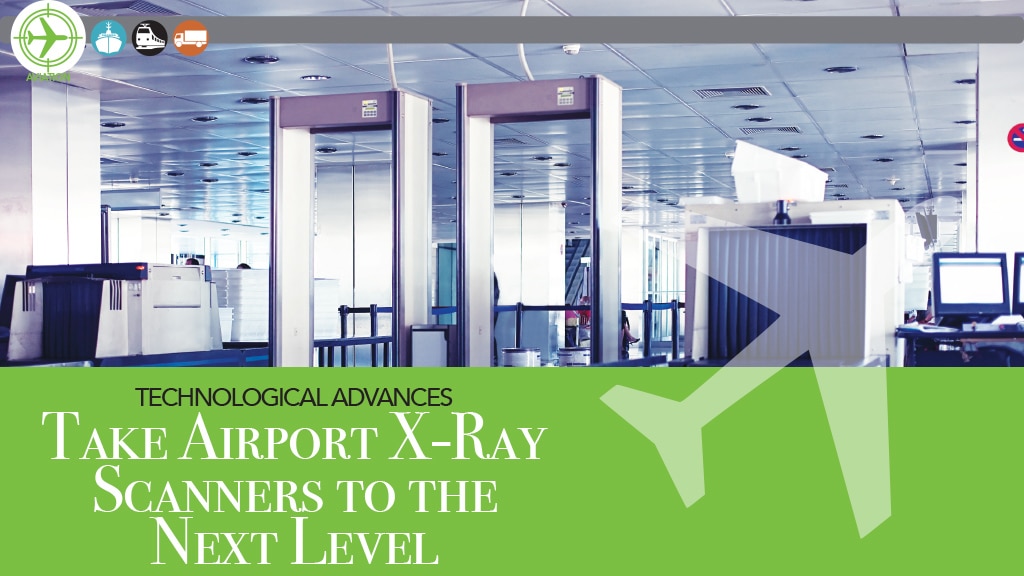In 2020, 1.8 billion scheduled passengers traveled by air globally, according to Statista.com, despite the impact of COVID-19 on air travel. The 2021 total of 2.27 billion was still off 2019’s pre-COVID high of 4.54 billion, but it showed a trend toward improvement – as does Statista’s prediction of 3.43 billion in 2022.
Clearly, even in the worst of times, the world’s airports need X-ray scanning equipment to check passengers and their baggage for dangerous goods, weapons, bombs and contraband.
The use of X-ray scanning goes back to the rash of airliner hijackings in the 1960s and early 1970s. According to the article “A brief history of airline security, hijackings and metal detectors” on IBM’s website: “Starting January 5, 1973, the FAA instituted universal physical screening of passengers, and everyone had to pass through metal detectors and have their bags searched. In 1974, the Air Transportation Security Act sanctioned the FAA’s universal screening rule, forcing U.S. airports to adopt metal-detection screening portals for passengers and X-ray inspection systems for carry-on bags.”
These early X-ray baggage screening devices left a lot to be desired in their image clarity and ability to help bagger screeners know what they were looking at. “This is because they each used a single stationary X-ray detector, providing the inspector with just one view of the baggage’s interior,” said Jeffrey Hamel, CEO of IDSS, which makes advanced X-ray screening systems. “They just took a single shot through the piece of luggage, with objects inside the bag obscuring the X-ray’s path and creating shadows, and that’s how airport security had to judge what was inside your bag.”
Add the fact that the analog video screens in use in those days were low resolution compared to today’s high-definition digital monitors, and making sense of a baggage X-ray was no easy matter. It also explains why, later on, passengers were required to remove their laptop computers from their bags. “Conventional X-ray scanners couldn’t see into laptops,” Hamel said.
As for people? The notion of bombarding passengers with X-rays was too much for the government to accept. During a 1968 U.S. Senate hearing into airport security, according to an IBM article, “Federal Aviation Administration (FAA) staffer Irving Ripp dismissed the suggestion as he was certain it would have ‘a bad psychological effect on passengers. … It would scare the pants off people. Plus, people would complain about invasion of privacy.’ None of the senators made any further inquiries about electronic screening.” This is why walk-through metal detectors were deployed instead.
Much has changed since then. Today, airports regularly scan people and baggage with low radiation X-ray scanners, using technological advances that have made this form of security screening safe, precise, highly detailed and reliable.
The Big Advance: Computed Tomography
Without a doubt, computed tomography is the advance that has transformed airport X-ray scan images from grainy monochrome photos to highly detailed, rotable color imagery.
Invented originally to aid medical diagnoses, “The term computed tomography, or CT, refers to a computerized X-ray imaging procedure in which a narrow beam of X-rays is aimed at a patient and quickly rotated around the body, producing signals that are processed by the machine’s computer to generate cross-sectional images — or slices — of the body,” according to the National Institute of Biomedical Imaging and Bioengineering, part of the U.S. National Institutes of Health. “These slices are called tomographic images and contain more detailed information than conventional X-rays. Once a number of successive slices are collected by the machine’s computer, they can be digitally stacked together to form a three-dimensional image of the patient that allows for easier identification and location of basic structures as well as possible tumors or abnormalities.”
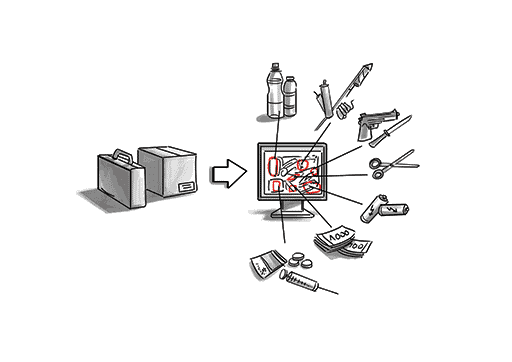
It didn’t take long for X-ray security screening manufacturers to grasp the value of CT, and apply it to their passenger/baggage screening units. “The use of CT technology at the checkpoint has been a revolution with the high-resolution 3D imaging it creates for the security operator,” said Harald Jentsch, Smiths Detection’s head of Hold Baggage & Air Cargo Screening Solutions. “CT technology allows airports and passengers to keep items such as laptops and water bottles in bags, increasing the speed of the checkpoint, improving passenger experience, as well as minimizing touch points, something that is here to stay post-coronavirus pandemic.”
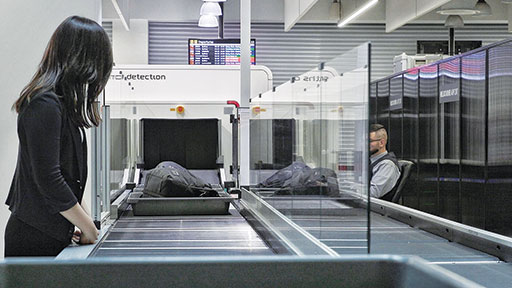
“In the context of airport security, CT scanners enable security operators to inspect baggage from every angle,” he noted. As well, “automatic explosives detection algorithms and automated object recognition software, which can detect prohibited items such as weapons, support operators in making fast and accurate decisions from the CT images. This not only boosts operational efficiency, but also the security outcome of airport security scans of people and baggage.”
CT X-ray screening systems do all this while moving passengers through airport security faster, said Brad Buswell, SVP and Security Enterprise Solution operation manager for Leidos, another maker of security screening solutions. “In just a few seconds, we can screen a passenger using safe millimeter wave X-ray technology to detect concealed objects made of a broad variety of metallic and non-metallic materials,” he noted.
“Such millimeter wave people scanners can detect concealed contraband of any material type,” said Jentsch. “The system software indicates concealed object locations by displaying a marker on a mannequin representation of the person being screened. The technology also offers the opportunity to scan more people while potential alarms on previous passengers are being resolved, keeping the security process moving.”
The Power of AI
Software-driven artificial intelligence along with its focused self-improvement process, machine learning (AI/ML) is supercharging airport screening systems, thanks to its ability to sift through massive amounts of data (aka Big Data), analyze its contents against a set of preset parameters, and learn from this work to enhance its processes and analytical conclusions.
“The opportunity to use AI to deliver enhanced safety, security and efficiency has been recognized by security solution providers and airports alike,” said Jentsch. “Security screening processes generate huge volumes of data, and the usage of AI has the potential to generate insights from this data which serve to optimize screening operations, outcomes, and system performance. Through machine learning and its subset deep learning, algorithms can be developed that imitate the way the human brain processes data and identifies patterns based on examples to inform decision-making.”
The application of deep learning to airport screening requires the creation of deep learning algorithms for security scanners; in other words, developing sets of specific software-driven procedures for analyzing the data being captured by CT scans. To make this happen, a library of CT X-ray images “is shown to the algorithm so it can learn to identify patterns in the shape of items, such as guns, gun parts, ammunition and knives or other potentially dangerous items such as lithium batteries,” Jentsch said. “Smart, adaptable deep learning algorithms that are available for the automatic detection of dangerous, prohibited, and contraband goods and substances significantly reduce the burden on security operators and are particularly helpful for less experienced image analysts.”
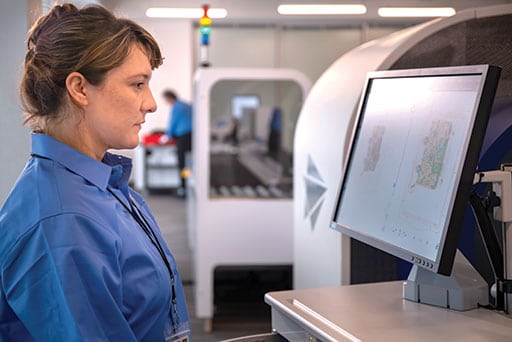
return systems, people screening, explosives trace and security management software. Leidos image.
This total solution improves threat detection, enhances traveler satisfaction, and increases
operational efficiency. xx
As well, algorithms don’t get tired or distracted the way humans do. This means that the quality of conclusions drawn by these algorithms — as long as they have been properly taught to begin with — is consistent over time.
The Importance of Open Architecture
For decades, electronics manufacturers of all kinds insisted on using closed architectures, also known as proprietary systems: technology that is built to one specific manufacturer’s unique specifications, and that is incompatible with similar systems made by other manufacturers.
The downside of closed architectures is that data cannot be shared by users of different systems, even if doing so might help everyone involved. This is why the security scanning industry is now embracing the idea of open architecture, so that data-sharing is supported in order to maximize security and optimize response times.
“Airports are looking for ways to integrate disparate operational data into actionable security information,” said Buswell. “One solution is using open architecture web services to integrate security components into a single system, providing detailed insights on passenger travel and security data.”
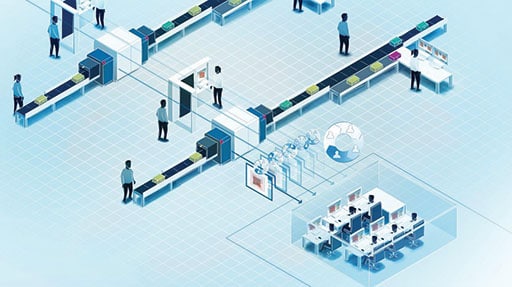
“Google, Walmart and Spotify all use open architecture platforms to maximize their efficiency and effectiveness,” Hamel said. “So do we: IDSS’ imaging system is built on the DOCS standard. It’s an open format that allows other people to read our images and then develop algorithms on top of them, lets us pass these images to third parties, and so forth.” This allows users to share imagery information across multiple security systems, and then use AI/ML to analyze it to improve their security in ways that just aren’t possible using closed architecture.
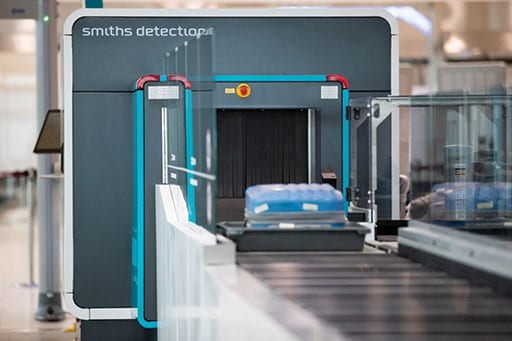
“Open architecture — the interoperability of security screening hardware, software and algorithms from different suppliers within one solution — is gathering momentum in the air transport industry,” agreed Jentsch. “Key drivers are the introduction of new capabilities and a wider choice of suppliers all supporting the achievement of our shared goals — operational efficiency, customer experience and security effectiveness.”
A Team Approach
These security screening advances are not occurring in a vacuum. Rather, CT X-ray scanning enabled by AI/ML is taking place within a larger airport security context.
This context has to do with a shift in airport security thinking. Rather than relying on separate, standalone solutions to specific issues such as weapons, explosives and contraband smuggling, “airports are adopting an overall risk-based approach to their security operations,” Buswell said. “The focus is no longer solely on X-ray screening devices. Now integrated technologies and data analysis from a variety of sources, including predictive analysis, are important factors to consider when working to prevent and assess emerging threats.”
A case in point: X-ray technology is still the primary method for scanning luggage for illegal substances at airports, but separate security checkpoints using AI/ML-enhanced detection techniques are being deployed to uncover fentanyl and other drugs.
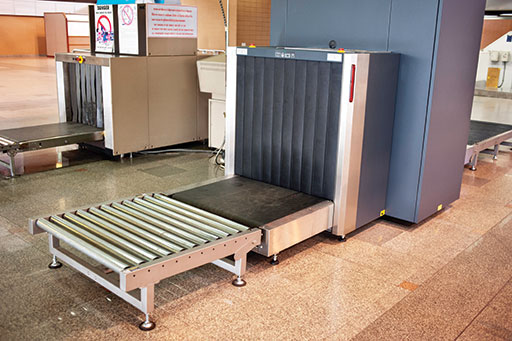
That’s not all: Chemical trace detection devices are now common in airports. “These devices can detect both explosives and narcotics with real-time results,” said Buswell. Other trace detection methods can also be used to identify illegal substances. For example, “ion mobility spectrometry (IMS) technology can be used to detect microscopic amounts of narcotics or explosives,” Jentsch said.
One additional approach separates passengers from their bags entirely. This method is known as remote screening, where baggage is screened in a centralized area in another part of the airport.
When remote baggage screening is used, inspectors can do their jobs in a calm environment, undistracted by passengers. “This allows them to make faster, accurate decisions,” said Jentsch. “In turn, this supports a smoother flow of baggage through screening, making it easier to keep people apart and avoid potential bunching. As well, networked images can be collected from all security lanes across the airport and delivered to the next available operator. This makes more efficient use of staff resources as images from both quiet and very busy lanes are shared equally.”
Looking Ahead
So what is the future of X-ray security screening? Well, the day may come where the process is automated, using self-service screening checkpoints and removing hands-on human inspectors from the process.
This idea is not as far-fetched as it may seem. “Although not yet a reality, automated features can be enabled by the application of AI-powered software to enhance existing security systems,” Jentsch said. “The vast amounts of data collected through checkpoint processes can be used to train and refine algorithms to achieve a highly reliable rate of automatic detection through object recognition.”
But don’t count humans out of X-ray screening entirely. “Even the most cutting-edge systems and processes can’t reach their full performance and benefit potential unless the operating team has the right skills, knowledge and motivation,” he noted. “The team must remain vigilant in order to make the right decision over and over and over again. Although the latest generation systems can assist in that decision-making, this must not overshadow threat awareness — which makes the right training and management even more important.”
If there’s a conclusion to be drawn, it is that X-ray security scanning has evolved into a highly precise, data-rich source of actionable information for airport security personnel. When combined with AI, open architecture, and other screening devices, this results in a formidable airport security solution that is faster and more effective than ever before.
